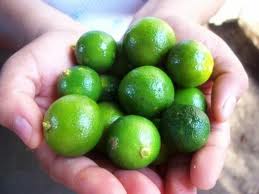 Calamansi or Philippine Lemon is one of the major crops in the country and indigenous in the Philippines.
Calamansi or Philippine Lemon is one of the major crops in the country and indigenous in the Philippines. PRDP to Assist Rebirth of “Calamansi King”
The PRDP Regional Program Coordination Office – MIMAROPA (RPCO IV-B) had identified Calamansi or Philippine Lemon (citrus madurinces) as its pilot commodity for the region through a partnership with the Local Government Unit of Oriental Mindoro and the Oriental Mindoro Federation of Farmers Association (OMFFA).
The Province of Oriental Mindoro is dubbed as the “Calamansi King” which produces 99% of the total regional volume or 101,601 metric tons (BAS, 2012).
The many uses of calamansi makes it a wonder fruit ; as condiment, juice drink or marmalade, dip sauce, meat & fish tenderizer, or as part of everyday cooking. It has also many medicinal uses and can be good treatment to itchy scalp, and for hair growth.
Yet, despite the various uses of this wonder fruit, production of calamansi in the province had declined during the period of 2008 to 2012, with decreasing trend at an average of 3.31 %. This is due to some factors like pest infestations, strong typhoons, unstable prices, ageing trees, and to some extent, crop conversion. The situation worsens with the identified constraints such as lack/poor conditions of farm to market roads, and weak and inefficient marketing system.
Through PRDP, marginal producers were assisted to form into clusters and were linked to big players like the Philippine Calamansi Association, Inc. (PCAI) and Limtuaco Distiller, with the help from different government agencies like DA,DOST, DTI and the Local Government Unit.
The proponent group were also trained to improve efficiency on production and processing of calamansi through adoption of Good Agricultural Practices and Good Manufacturing Process, expansion of production areas, engaging in off-season fruiting, and promotion for the diversified uses of calamansi.
It is aimed that farmers and other small players will benefit from developing the calamansi industry through increased incomes from employment generation, productivity improvements, and improved relations among stakeholders.
(Calamansi Value Chain Analysis, 2014)
